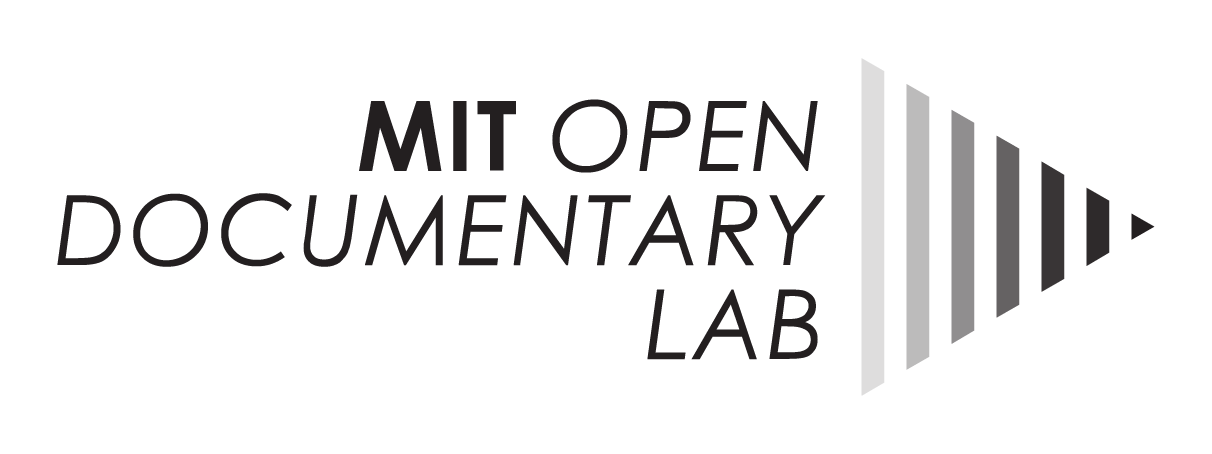15 Aug OpenDocLab Fellows Campus Visit
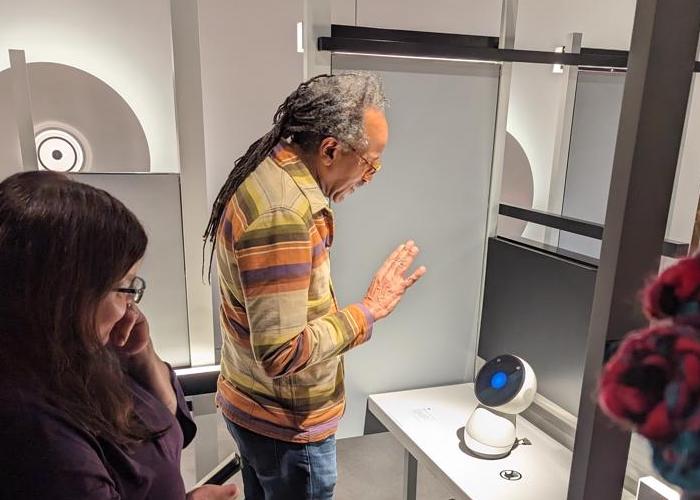
ODL Fellow and MLK Scholar Louis Massiah chats with Jibo, a working social robot.
As part of our commitment to hybridity, we brought MIT Open Documentary Lab remote fellows to the MIT campus. They arrived from Kenya, Wales, The Netherlands, California, and Philadelphia to gather in person with local fellows, staff and alumni for a 3-day retreat in May after a year of being together online.
Over three days of programming, the fellows explored MIT labs, museums, and libraries while sharing meals together, lively discussions and participating in workshops and demos about emerging technologies and documentary.
The programming began with a tour of MIT and a visit to the MIT.nano Immersion Lab, a facility with cutting edge motion capture, data visualization, spatial sound and mixed reality tools available to anyone at MIT. The fellows received demos including by ODL fellow Lori Landay who has worked with the Immersion Lab extensively this year to prototype a system of sensors that would allow dancers to control the music accompanying them through their movements. Another fellow, Kidus Hailesilassie, connected with the team working on the dance project because his work explores the body as a cultural archive.
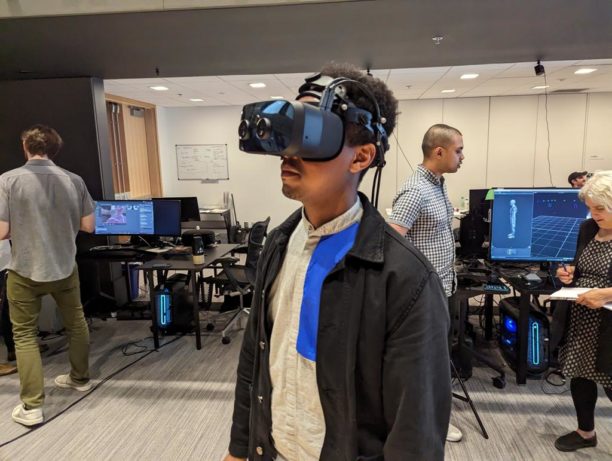
ODL Fellow Kidus Hailesilassie testing a new mixed reality headset in the Immersion Lab.
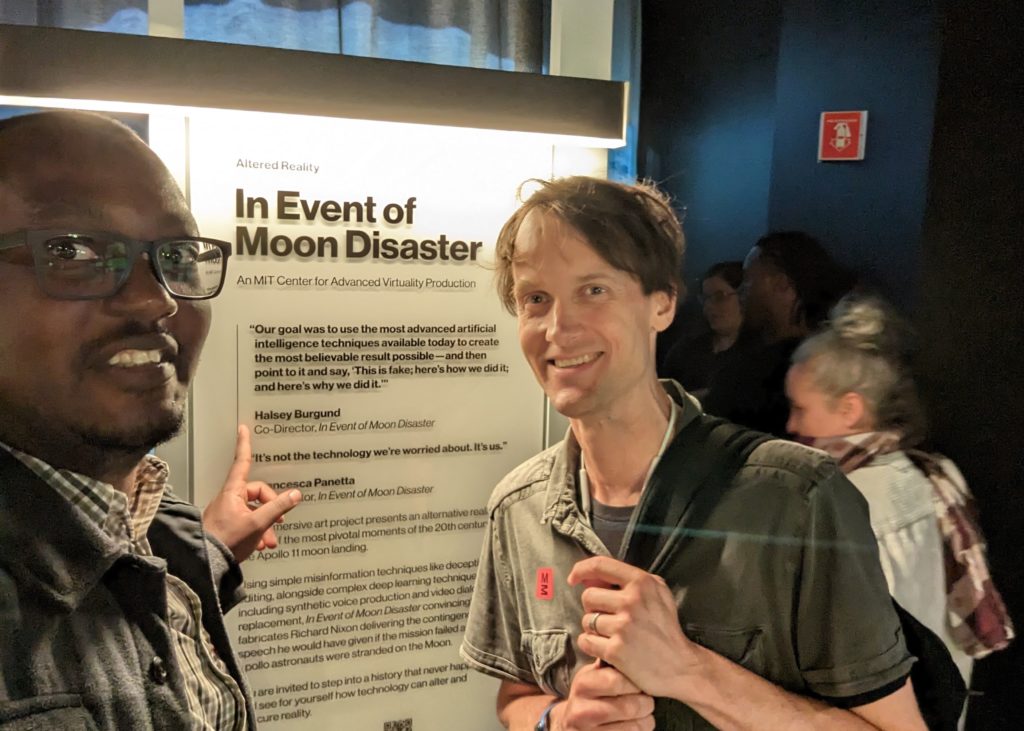
ODL Fellow Max Musau and Creative Technologist in Residence Halsey Burgund with the plaque introducing Burgund’s “In Event of Moon Disaster” project.
The group also visited the newly-reopened MIT Museum in Kendall Square. Lindsey Bartholomew, Exhibit Content and Experience Developer at the museum, led a tour through the artificial intelligence exhibit which she designed, describing key questions and conversations around AI that informed her design choices. Throughout the interactive exhibit, the fellows had the opportunity to chat with robots, analyze AI-created poetry, and view Burgund’s In Event of Moon Disaster, a project about the dangers of deep fakes, on permanent viewing at the museum. Using AI technologies, deep learning techniques, voice over and archival footage, the project shows Richard Nixon giving a contingency speech that was written in case the astronauts sent to the moon were unable to return. It was a speech he never had to deliver. But it looks real. The project seeks to create critical awareness around deep fake technologies.
Many fellows participate in an ODL initiative about augmenting public space entitled Reimagining Place: Revealing Stories of Place with Communities, Technologies and Nature. To further their experimentation with augmentation technologies, the lab hosted three hybrid AR tools workshops during the campus visit including ODL Fellow Damien McDuffie Black Terminus AR, a mobile-first AR production app that he designed and produced, Hoverlay and Adobe Aero Geospatial. In these demos, we explored not only the features of these tools but also questions of accessibility, sustainability, and democracy of access.
“In thinking past interactive games, there is a big opportunity to make shorter interactive stories and experiences that would be relatively inexpensive but very immersive and unique using a mix of tools…” wrote ODL Fellow and game designer Max Musau. “This is an area I would like to collaborate on more with the other fellows.”
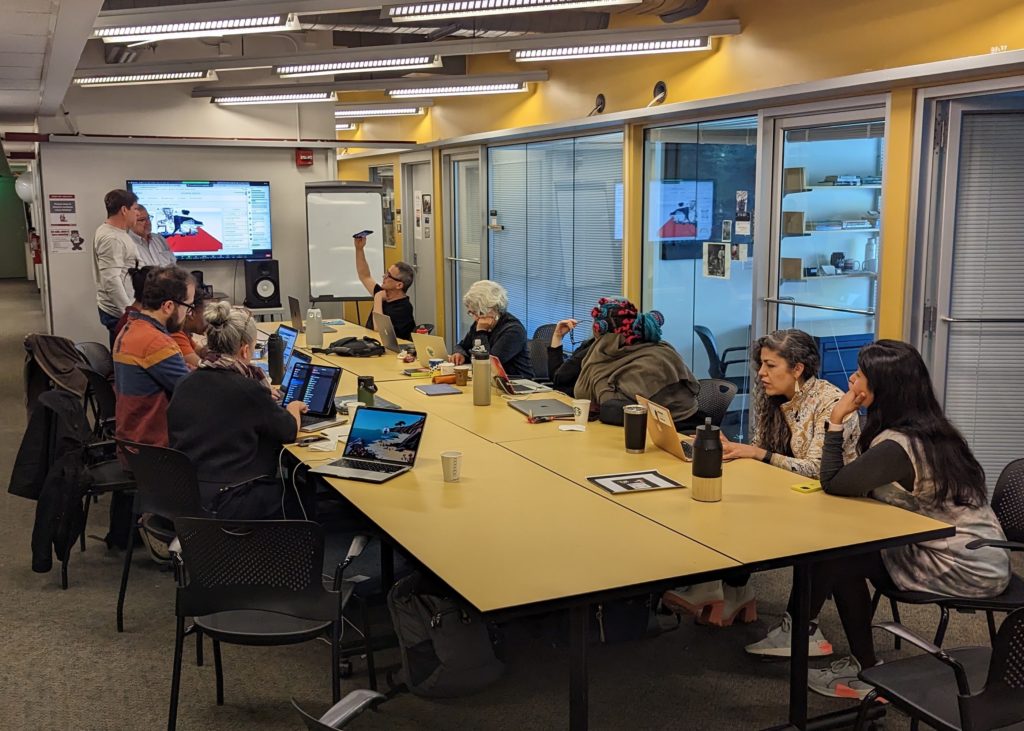
Nicholas Robbe of Hoverlay leads a workshop on creating interactive AR experiences.
The fellowship culminated in a private screening and discussion of Principal Investigator Vivek Bald’s award-winning documentary In Search of Bengali Harlem.
By the end of the visit, fellows had a much better sense of each other, their work and MIT.
“The big takeaway from this first on-campus visit for remote fellows is that it’s worth it,” said ODL Director Sarah Wolozin. “It accelerates community building and learning and creates a better connection to MIT and each other. Next year we’ll invest in bringing remote fellows to MIT early so that they can take advantage of more MIT resources and can foster collaborations from the start.”
The fellowship program has changed over the years from an in-person program to fully remote during the pandemic and now as a hybrid program. Some fellows reside at MIT while others participate online. The fellowships are not funded so it requires people to find their own funding if they want to reside on the MIT campus. Many are local. The online option makes the program much more accessible and the talent pool much bigger. The only requirement to participate besides having a stellar project that pushes the boundaries of storytelling is to show up for a weekly zoom session. But it has been an evolving process with a lot of experimentation to make the online and in-person program work together and to make the experience equitable and fulfilling for all.
The fellowship program began in 2013 as a way to bring non-fiction storytellers to MIT who wanted to experiment with emerging technologies and engage in dialogue with other artists, journalists, and documentarians as well as scholars and technologists. They participated in weekly meetings to critique each other’s work, attended the lab’s weekly lecture series and audited MIT classes. They had access to MIT resources such as the libraries and other labs, people and events. The ODL community was small and the lab served as a portal to the rest of MIT. Collaborations emerged such as that of fellow Karim Ben Khelifa (2013) and Professor Fox Harrell for The Enemy, a virtual reality experience that puts the viewer face to face with two combatants from opposing sides and uses AI and neuroscience to show viewers their own biases.
When the program went online in 2020 the focus changed to the ODL community. Because it was online, many more people could participate and our community grew. We formed partnerships with other media organizations to bring in new fellows such as Black Public Media. Everyone had equal access to lab and MIT resources.
In fall 2021, MIT returned to campus. We didn’t want to lose the online component and all the access that entailed and so we became hybrid. Since then we have been experimenting with how to bring the two communities together and how to create access to MIT resources.
We shifted social platforms from zoom to Discord which allows for more community building. We changed the programming structure so that our all-lab meetings were fully remote and we added smaller in-person or subject focused meetings. Our informal topical discussions provided an opportunity for fellows to bring in broader questions from their work such as the role of documentary in classrooms or the balance between anonymity and transparency in activist work that may be high-risk.
We added different community roles to create more opportunities for engagement outside of scheduled video calls. We appointed long-time fellows Halsey Burgund and Rashin Fahandej as mentors to provide more guidance especially to new fellows. As highly-experienced creators who know the fellowship program well, they were able to support fellows with both their projects and their program experiences.
“I thrive in situations where I can both help others through my experiences and skills while simultaneously learning from them and being inspired by them and this role fits that bill perfectly,” Burgund wrote.
It’s been an ongoing process to learn how to make hybridity work but through it all the community has remained strong.
“I feel that these past couple of years as a fellow have allowed me to build meaningful connections with other artists, researchers, and academics in the field,” wrote Tamara Shogaolu, reflecting on her two-year fellowship this spring. “I really love this community and hope to continue to build and collaborate with the other fellows I’ve met during my time in the lab.”


